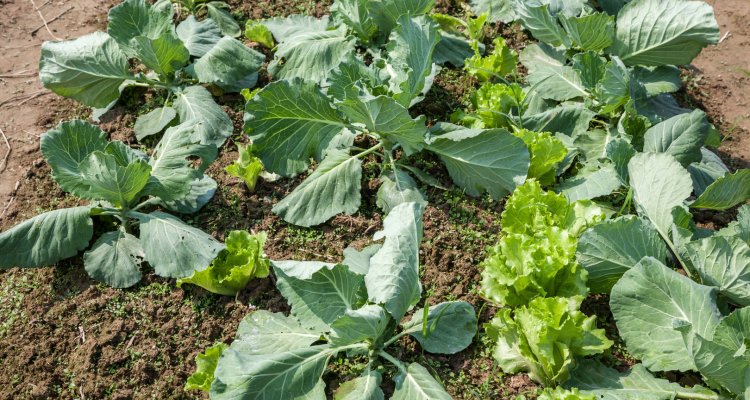
Project
Intercropping: spatial modelling of soil microbes
In this project, we model the spread of multiple types of soil microbes in the soil between plants. The microbes locally interact with each other and with root exudates (i.e. compounds released by plant roots to enhance or hinder microbial growth). With this model, we wish to identify the effects of intercropping on soil microbial ecological and evolutionary dynamics.
Background
Intercropping, the practice of growing multiple types of crops in the same field, may reduce the environmental impact of agricultural systems, for example by reducing the amount of pesticides or fertiliser needed. The mechanisms behind these benefits are largely unknown, but the soil microbial community is thought to be involved. Since the composition of the soil microbiome varies greatly even between nearby plants, spatial structure and distance between plants likely play essential roles.
Project description
Here, we aim to develop a spatially explicit reaction-diffusion partial differential equation model of multiple types of soil microbes interacting with each other and with the plants through root exudates. With this model, we wish to identify the effect of intercropped versus monocropped microbe-promoting (e.g. Allium fistulosum – spring onion) and microbe-suppressing plants (e.g. Brassica oleracea – several cabbage varieties such as broccoli and kale) on soil microbial eco-evolutionary dynamics. Moreover, we will conduct a literature review to identify key open questions that this type of model can answer. We will then extend our model in relevant directions to answer these questions.
Our model will be integrated with data from concurrent greenhouse and open-field intercropping experiments performed within a recently started within-WUR consortium that studies the role of plant diversity and soil microbiome in intercropping. Our research aims to contribute to both the fundamental theoretical understanding of microbial ecology in space, and to application in the understanding and design of specific intercropping systems.